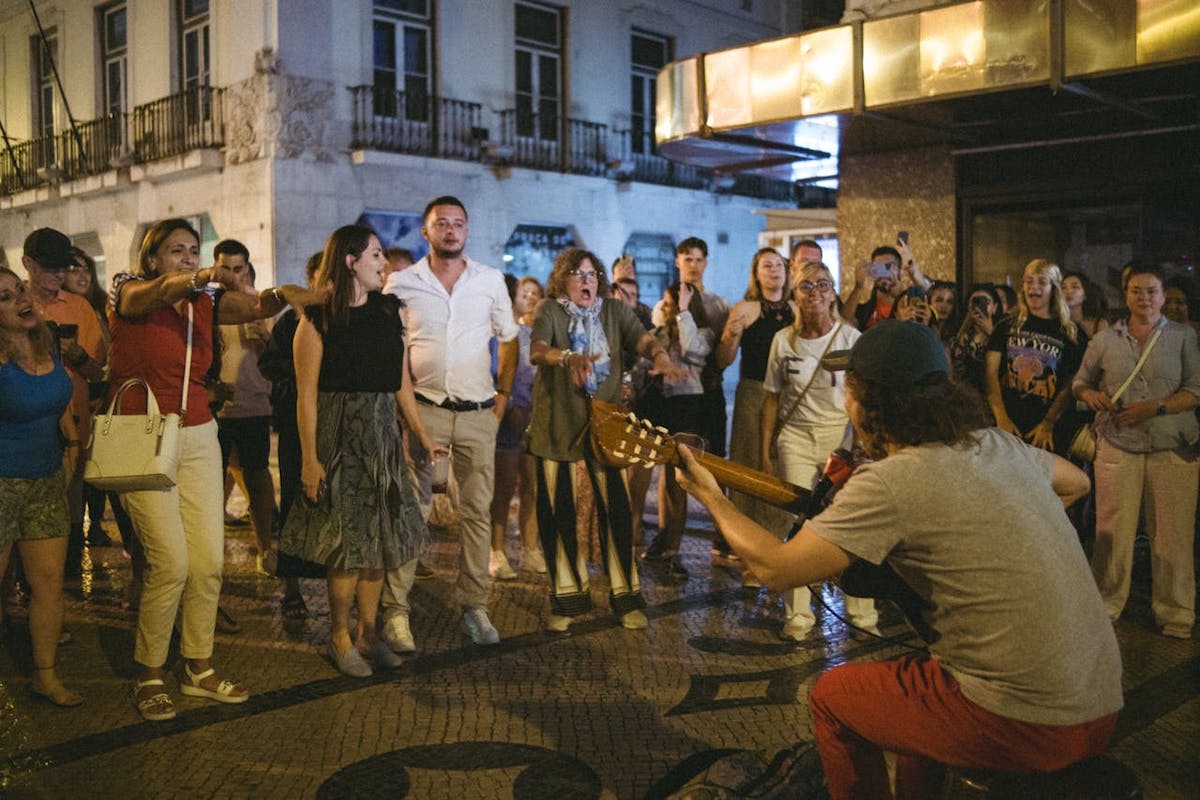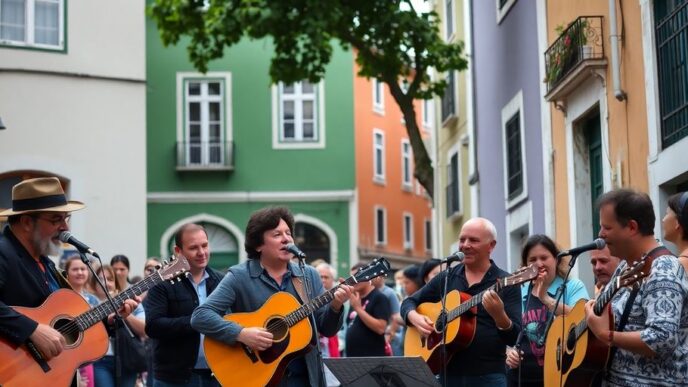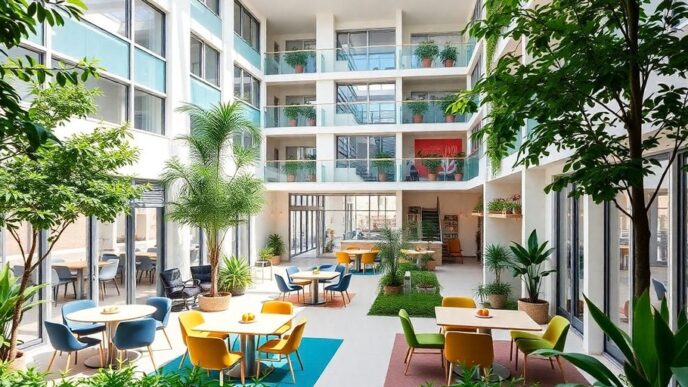Lisbon’s neighborhoods are as varied and dynamic as the city itself, each with its own distinct personality, history, and charm. Visitors to Portugal’s capital are rewarded with experiences that span centuries of culture, from bustling streets filled with modern shops and cafes to winding alleyways echoing with fado music. Here’s a guide to some of Lisbon’s most iconic neighborhoods: Baixa, Chiado, Bairro Alto, Alfama, and Belém.
1. Baixa
- Location and Overview: Baixa is the heart of Lisbon, centrally located between the Tagus River and the hilly neighborhoods surrounding it. Reconstructed after the devastating 1755 earthquake by the Marquis of Pombal, Baixa is known for its grand, grid-like layout and neoclassical architecture.
- What It’s Famous For: The neighborhood is home to Lisbon’s most iconic squares, such as Praça do Comércio, Rossio Square, and Praça da Figueira. It’s also the best place for shopping, with pedestrianized streets like Rua Augusta bustling with boutique stores and street performers.
- Bars and Restaurants: Baixa has a variety of cafes and eateries. Try Café Martinho da Arcada, a favorite of poet Fernando Pessoa, for a taste of history. For Portuguese pastries, Confeitaria Nacional is a must-visit.
- Historical Notes: Baixa is not just an area of modern commerce; it holds historic significance as a symbol of Lisbon’s resilience following the 18th-century earthquake.
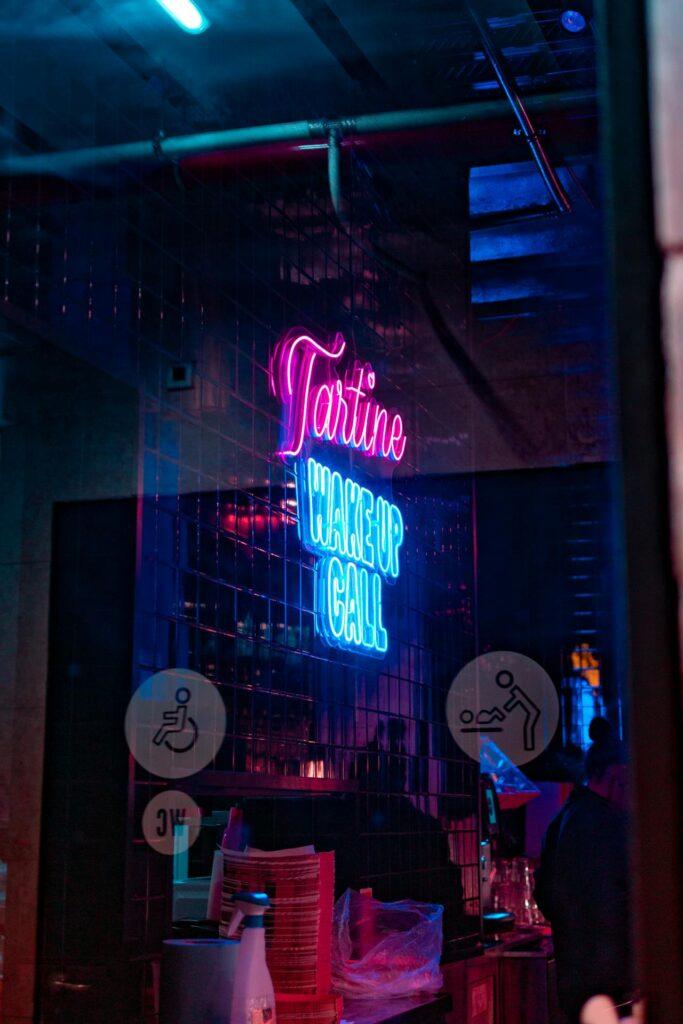
2. Chiado
- Location and Overview: Located west of Baixa and climbing towards Bairro Alto, Chiado is Lisbon’s sophisticated cultural hub. It has long been a meeting point for artists, intellectuals, and writers.
- What It’s Famous For: Chiado is renowned for its bookshops, theaters, and historic cafes, such as A Brasileira, where a bronze statue of Fernando Pessoa sits as a tribute to the literary giant. The neighborhood is also a hub for high-end shopping, with a mix of traditional Portuguese brands and international boutiques.
- Bars and Restaurants: The area is known for elegant cafes and refined dining. Belcanto, helmed by Michelin-starred chef José Avillez, offers an unforgettable culinary experience. For more casual dining, Cervejaria Trindade serves classic Portuguese dishes in a former monastery.
- Historical Notes: Chiado’s revival after a significant fire in 1988 showcases Lisbon’s commitment to preserving its artistic spirit. The area has also been home to notable residents like playwright Gil Vicente and poet Luís de Camões.
3. Bairro Alto
- Location and Overview: Sitting above Chiado, Bairro Alto is Lisbon’s bohemian quarter. By day, it may seem quiet, but as night falls, it transforms into the city’s most vibrant nightlife district.
- What It’s Famous For: Bairro Alto is famed for its narrow, cobblestone streets filled with small bars, live music venues, and quirky shops. It’s the epicenter of Lisbon’s nightlife, where visitors can experience traditional fado or dance until the early hours in modern clubs.
- Bars and Restaurants: For a true fado experience, head to Tasca do Chico. For drinks, Park, a rooftop bar atop a multi-story car park, offers stunning views over the city. BA Wine Bar do Bairro Alto is perfect for sampling Portuguese wines.
- Historical Notes: Once a center for journalism and print media in the 19th century, Bairro Alto has a rich history tied to Portugal’s press and cultural life. It has retained its edgy, artistic vibe through the years.
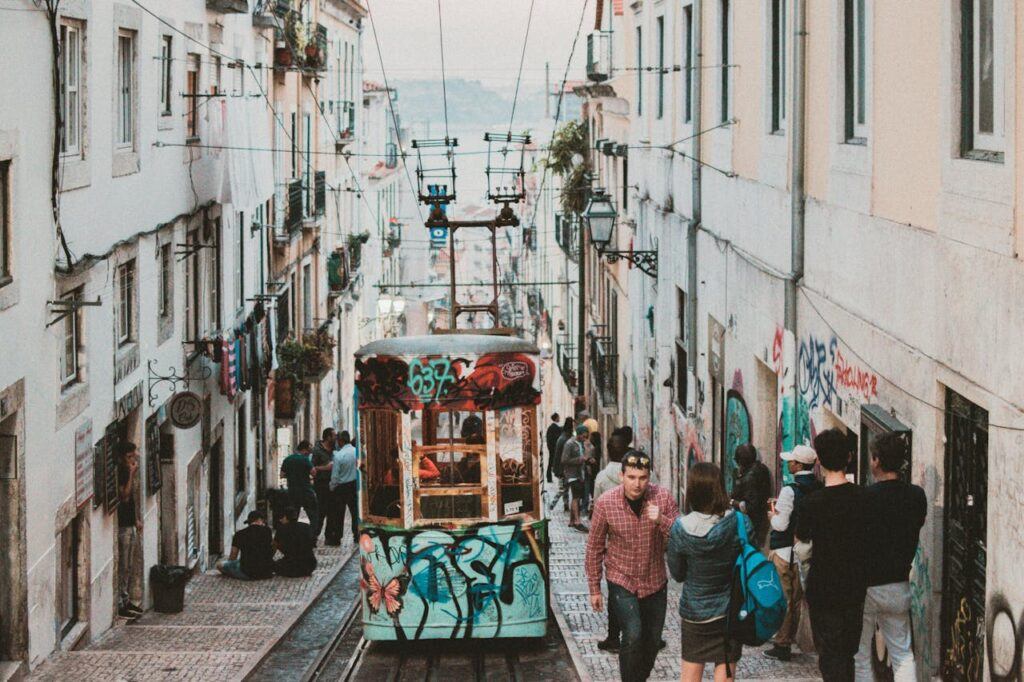
4. Alfama
- Location and Overview: Alfama is Lisbon’s oldest neighborhood, stretching from São Jorge Castle down to the Tagus River. Its maze-like layout reflects its Moorish origins.
- What It’s Famous For: Alfama is best known for its traditional fado houses, medieval alleys, and viewpoints like Miradouro da Senhora do Monte and Miradouro das Portas do Sol, offering breathtaking views of the city and river.
- Bars and Restaurants: Clube de Fado and Mesa de Frades are top spots to experience fado accompanied by authentic Portuguese dishes. For a local drink, Tejo Bar offers an intimate and artsy atmosphere.
- Historical Notes: Alfama has a strong maritime history, once home to Lisbon’s fisherman community. Today, it preserves a strong sense of tradition, hosting annual celebrations such as the Feast of St. Anthony, where the streets come alive with sardine grills and music.
5. Belém
- Location and Overview: Situated along the western edge of Lisbon, Belém is steeped in the history of Portugal’s Age of Discovery. It’s a riverside district filled with monuments that celebrate the country’s seafaring achievements.
- What It’s Famous For: Belém is famous for landmarks such as the Jerónimos Monastery, Belém Tower, and the Monument to the Discoveries. It’s also the birthplace of the Pastéis de Belém, the iconic Portuguese custard tart.
- Bars and Restaurants: Visitors shouldn’t miss Pastéis de Belém, where the original custard tarts are still made. Feitoria, a Michelin-starred restaurant, offers innovative Portuguese cuisine with global influences.
- Historical Notes: Belém was the launching point for Vasco da Gama’s historic voyage to India in 1497. The Jerónimos Monastery was built to commemorate his journey and stands as a testament to Portugal’s maritime prowess.
Conclusion
Lisbon’s neighborhoods offer a blend of history, culture, and modernity that is unmatched. Whether you’re strolling through the grand avenues of Baixa, enjoying a book in a Chiado café, savoring fado in Alfama, experiencing the nightlife in Bairro Alto, or admiring the historic monuments in Belém, each area provides a unique experience that brings Lisbon’s storied past and lively present to life.

